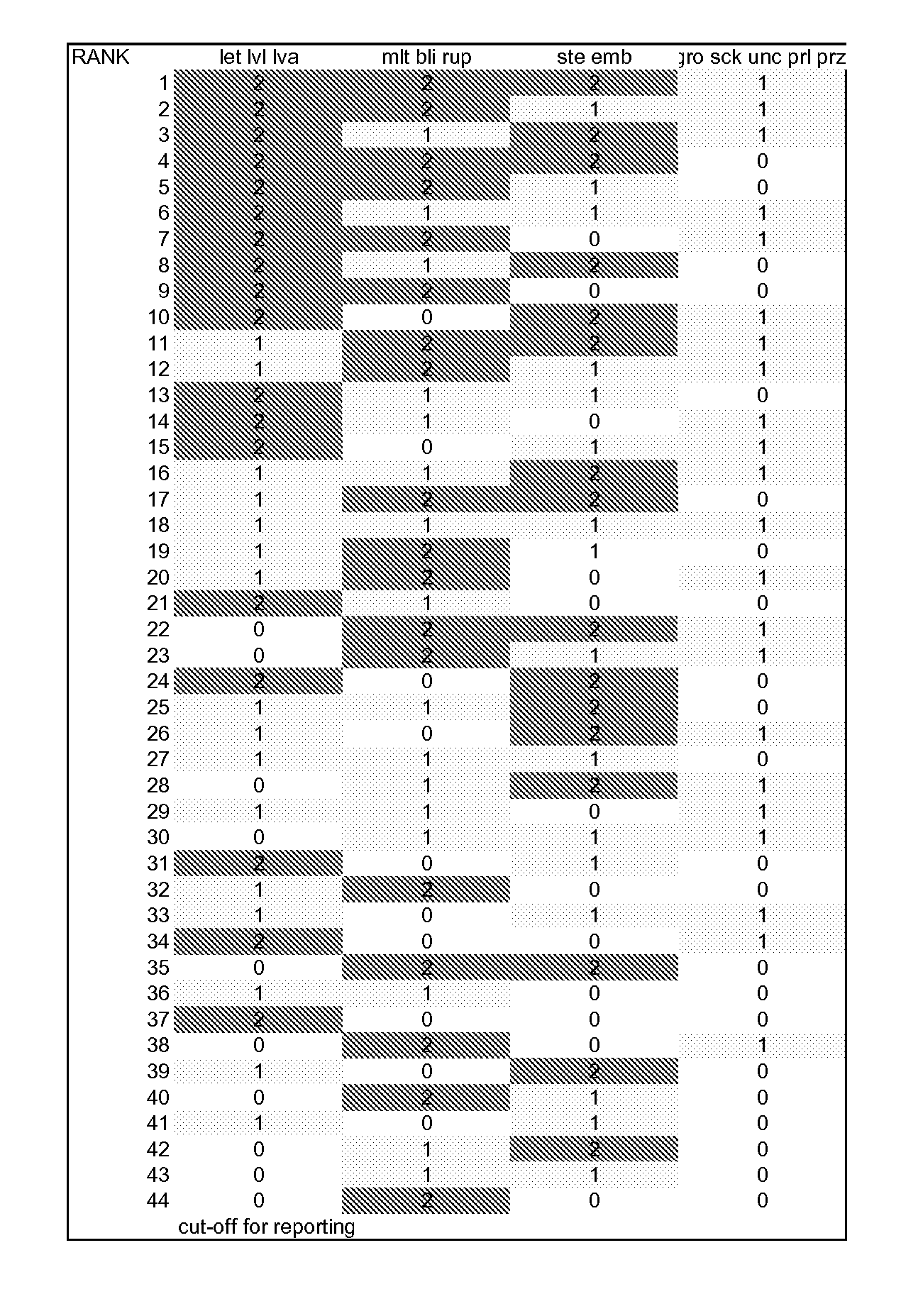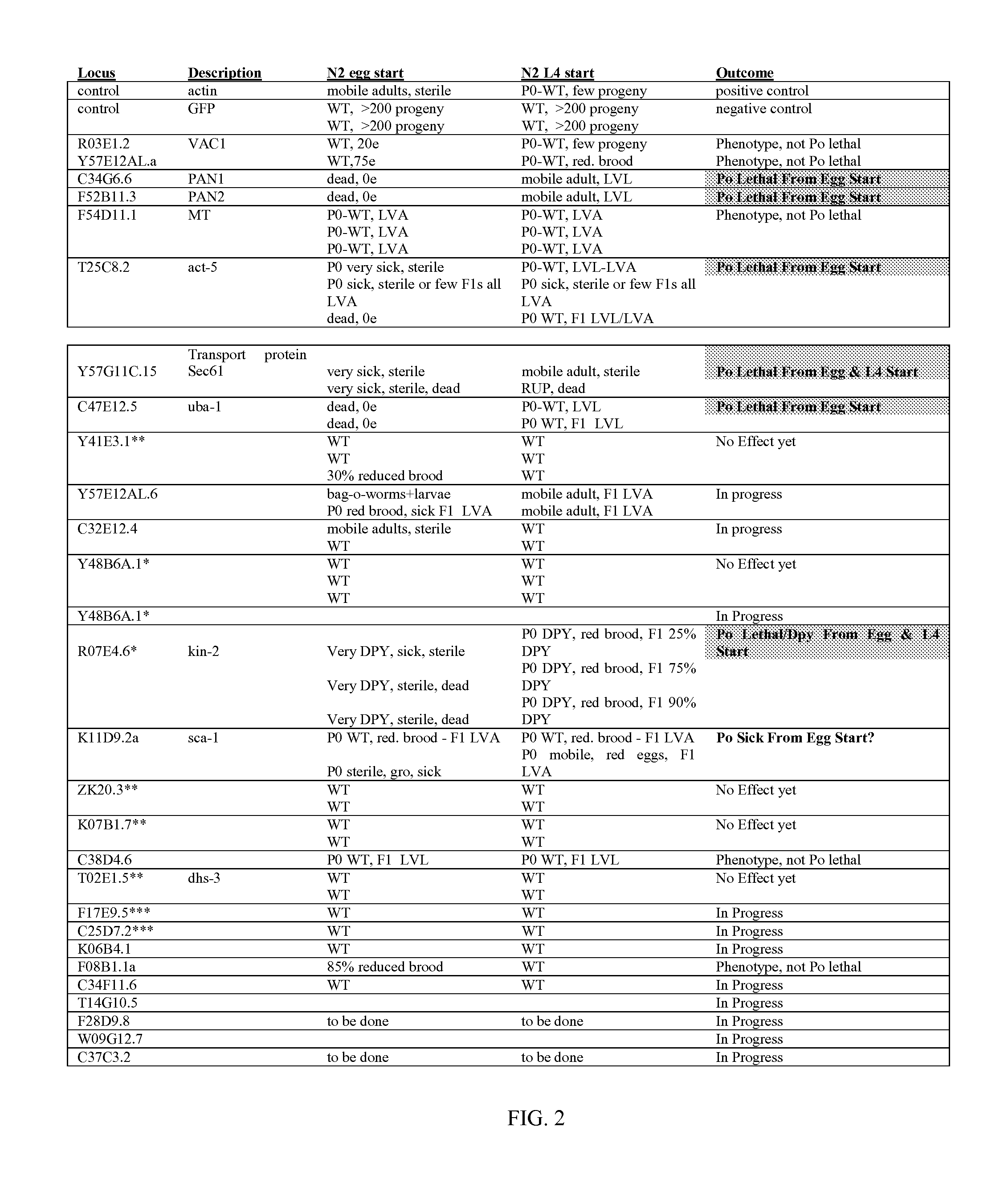Identification and use of target genes for control of plant parasitic nematodes
a technology of plant parasites and target genes, which is applied in the field of identification of target coding sequences, can solve the problems of high toxicity of nematocidal soil fumigants such as chloropicrin, chloropicrin and methyl bromide and related compounds, and significant economic losses in agriculture and livestock, and achieves the effect of higher likelihood and confiden
- Summary
- Abstract
- Description
- Claims
- Application Information
AI Technical Summary
Benefits of technology
Problems solved by technology
Method used
Image
Examples
example 1
Criteria for Target Gene Selection
[0134] To rank genes by likely essentiality of function in the nematode lifecycle, information from C. elegans RNA interference (RNAi) experiments available at wormbase.org was combined with additional experimental information. Using the >40,000 phenotype data points in wormbase, all ˜20,000 C. elegans genes were ranked for their potency of phenotype, level of confidence in phenotype, and likelihood of effects at multiple stages in the lifecycle. 715 C. elegans genes with BLAST amino acid homology to H. glycines of at least e-10 (see orthology determination below) had scores in this phenotype scoring system of 44 or better, where 1 is best. Below, phenotype statistics are provided for just the targets eventually making the top 300 list (using all criteria). As the phenotype ranking is dependent upon currently available information, it is not meant to be all inclusive capturing every gene that could be a good target, but rather to provide a list of ...
example 2
C. elegans P-zero (P0) RNAi screens
[0144] In addition to the standard RNAi assay, additional C. elegans RNAi screens were performed. One of these was a P0 lethal screen.
P-zero (P0) or Rapid Onset RNAi Effects in C. elegans
[0145] To control Heterodera glycines by providing dsRNA from a transgenic soy plant, finding genes that are sensitive to rapid onset RNAi effects could be useful. Such genes might block mature feeding site formation by the J2 while slow onset genes might not show an effect until the next generation. C. elegans genes where effects are seen in the exposed animal, so called P0 (P-zero) generation effects, might predict H. glycines orthologs with high and rapid sensitivity to RNAi.
[0146] All large scale screens for RNAi effects in C. elegans have exposed initial worms as L4s or adults (the genetic P0 (P-zero) generation) to dsRNA and looked for phenotypes in their progeny, the F1 and F2 generation. Sterility of the initial P0 animal was also observed in many case...
example 3
C. elegans Intestine-Specific RNAi Screen
[0152] A second additional screen was also performed to aid in the selection of target genes (Table 1). A strain of C. elegans that is sensitive to RNAi only in the intestine was previously generated. This strain can be used to rapidly screen the set of genes previously shown to be essential to viability and development by RNAi to identify those that are essential specifically in the intestine. Such genes may be advantageous targets with plant-delivered H. glycines RNAi as the intestine is believed to be the first tissue to come in contact with the entering dsRNA. Further, genes encoding secreted and transmembrane proteins may be vulnerable to disruption by the expression in the plant of nematocidal proteins that disrupt the function of these gene products.
[0153] The C. elegans intestine-specific RNAi strain was generated by introducing a transgene that drives expression of the wild-type sid-1 gene under the control of an intestine specific...
PUM
| Property | Measurement | Unit |
|---|---|---|
| Fraction | aaaaa | aaaaa |
| Fraction | aaaaa | aaaaa |
| Temperature | aaaaa | aaaaa |
Abstract
Description
Claims
Application Information
 Login to View More
Login to View More - R&D
- Intellectual Property
- Life Sciences
- Materials
- Tech Scout
- Unparalleled Data Quality
- Higher Quality Content
- 60% Fewer Hallucinations
Browse by: Latest US Patents, China's latest patents, Technical Efficacy Thesaurus, Application Domain, Technology Topic, Popular Technical Reports.
© 2025 PatSnap. All rights reserved.Legal|Privacy policy|Modern Slavery Act Transparency Statement|Sitemap|About US| Contact US: help@patsnap.com



